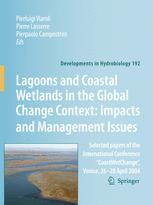

Most ebook files are in PDF format, so you can easily read them using various software such as Foxit Reader or directly on the Google Chrome browser.
Some ebook files are released by publishers in other formats such as .awz, .mobi, .epub, .fb2, etc. You may need to install specific software to read these formats on mobile/PC, such as Calibre.
Please read the tutorial at this link: https://ebookbell.com/faq
We offer FREE conversion to the popular formats you request; however, this may take some time. Therefore, right after payment, please email us, and we will try to provide the service as quickly as possible.
For some exceptional file formats or broken links (if any), please refrain from opening any disputes. Instead, email us first, and we will try to assist within a maximum of 6 hours.
EbookBell Team

4.3
98 reviewsThis interdisciplinary volume comprehensively reviews recent developments in wetland science and global change. The aim is to identify gaps, problems and successes in the integration of scientific issues into lagoon and coastal wetland management. The major strength of this volume is that it integrates several fields of research including climatology, hydrology, geomorphology, ecology and biology. By adopting such a structure, the reader is provided with an updated insight of impacts, changes and alteration of coastal lagoons and wetlands deriving from local anthropogenic pressures and global processes, e.g. coastal erosion, sea level rise, flooding and biological invasions. The recent evolution of lagoons and coastal wetlands is analysed, including population and community dynamics, biogeochemical processes and pollution, key biological elements and related indicators. Significant issues, as flooding and ecological risk assessment, are framed into coastal dynamics considering local specific and more general situations. Lagoons and wetlands are also analysed as sentinel ecosystems for developing coastal observations of global change. This book will therefore provide a reference work for wetland scientists, as well as for policy and decision makers involved in coastal lagoons and wetlands management.